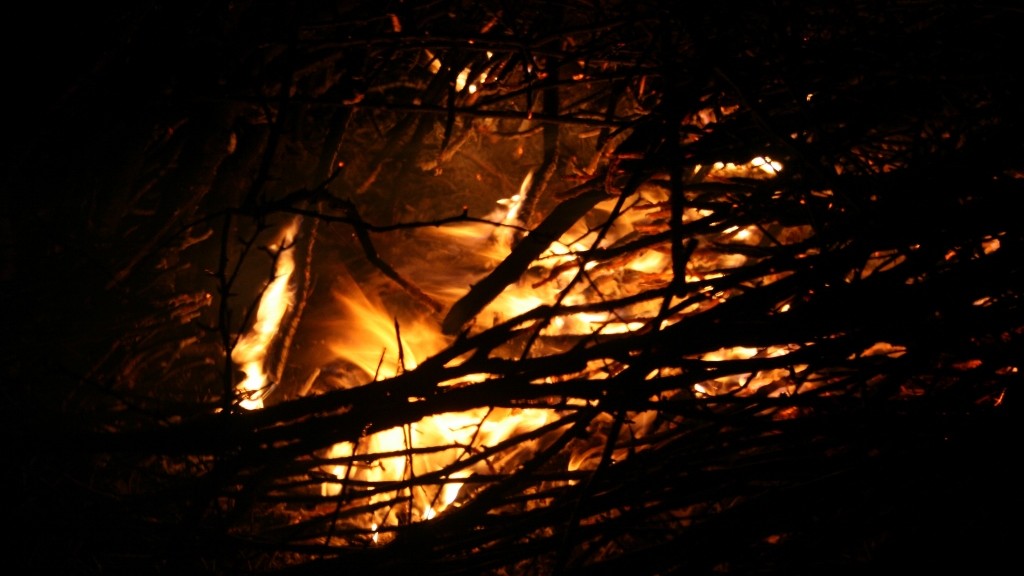It has been a good winter for the bees and there have been very few losses. However, what do you do if you find a hive of your bees has died out?
Well, the first thing to do is find out why they died because whatever killed them could still be lurking in there; if you can pin down the cause of death then you will know what to do with the hive.
Look for the two most obvious things first:
- Starvation
- Poor queen
Much will depend on the time of year they died…
Starvation
This happens particularly in winter but if spring is cold and endless or summer is unusually shitty and you forget to feed them, they could have starved – so the first thing to check is have they got any stores?
Nucs are particularly vulnerable to starvation – they can be robbed out by strong neighbours or be simply not strong enough to sustain themselves.
Are there any stores?
No…
If there are no stores it will be likely they starved. If so, there will be a pile of dead bees on the floor and on the frames there will be clusters of dead bees with their heads at the bottom of the cells where they died trying to find the last little bit of food. If they are mouldy it’s because they starved some time ago and moulds moved in because that’s what moulds do.
However, bear in mind that they could have died of something else and bees from other hives came and robbed the stores later.
Yes…
If there are plenty of stores, they may still have starved. If the cluster of bees is too small and the weather is too cold for too long they will lose contact with their stores and ‘starve in the midst of plenty’. Otherwise the symptoms will be the same.
In either case, there will be no brood.
Poor queens
Another common cause of winter mortality is poor queens. Since the import of Varroa and the extinction of all the wild bees, the associated problems with drones and not to mention the weather – there have been problems with queen mating. Sometimes a poorly mated queen will make it into the winter but she won’t make it out the other side.
What happens is that she will lay what she thinks are worker eggs in worker comb but because she has run out of the store of sperm in her spermatheca, the eggs are not fertilised and are therefore drones. Because drone larvae are much bigger than workers, their growth and development in worker cells pushes the cells out of shape and the comb is distorted and ugly.
The remaining adult workers wear themselves out rearing the drones and there are no young workers to take their place. The colony fizzles out during winter.
Also, when a queen is unable to lay fertilised eggs, the colony is unable to replace the queen and is doomed.
Distorted comb?
If you had a drone layer, there could still be that lump of dead bees on the floor and the mats of dead bees with their heads in the cells. In addition there will be distorted comb and in amongst it will probably be a few unhatched pupae. Despite being worker cells they will have the domed cappings of drone cells.
Queen present?
Sometimes a colony like this can still be found limping along in the early spring. There will be a little cluster of bees with what looks like a fine strong queen but if you see that misshapen comb and domed cappings you will have to harden your heart and knock her on the head. Unite the remaining bees with a stronger neighbour.
Disease
If there are no bees left in the hive but there is capped, pepperpot brood and the combs are dark and there is an old fashioned gluey smell – beware. Do the matchstick test. It might not have been American Foul Brood (AFB) but if it was me I’d burn all those combs even if I did the matchstick test and couldn’t find a gooey cell – it might be that they just dried up. The procedure for disposing of a colony with AFB is outlined here.
Checklist
- Are there any stores left?
- Are there any dead bees left – if so, how many are there and what do they look like?
- Are they in a lump of bees on the floor or have they all got their little dead heads buried in the cells?
If so they probably starved.
- Look at the comb. Is there any capped brood left?
- If so is it ragged and domed?
If the answer to the last two is yes, the bees probably went into the winter with a poor queen.
- Or is it gappy and are the cappings perforated?
- Is the comb old and black?
If the answer to the last two is yes – this could be American Foul Brood. Do the matchstick test or send for analysis. If so burn it.
- Are there signs of dysentery in the hive?
This could be Nosema or stress from something else – such as loss of the queen.
- Take a close look into the debris on the hive floor – are there a lot of Varroa about the place?
- Take a closer look at the dead bees, are there a lot of shrivelled wings?
If the answer to the last two is yes, your colony could have died of Varroaosis.
- Is there a big pile of dead and dying bees below the entrance – all about dead about the same time? If so suspect pesticide poisoning – but this is only really a summer problem.
- Are there lots of dead bees outside the entrance, crawlers on the floor and K wings? This could be Acarine.
Copyright © Beespoke.info, 2014. All Rights Reserved.
